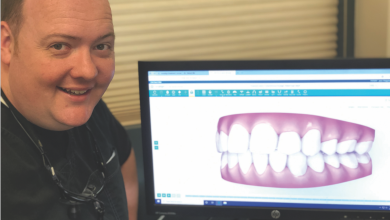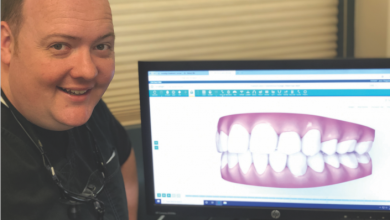Dental Insurance
Back in 1971, General Motors introduced the concept of dental “insurance” to attract employees. At that time the annual benefit was approximately $1,000 and there was no limitation on what services were covered. Since that time, the cost of living has risen dramatically, including the cost of dental supplies and dental labs. However, the annual benefit for most dental “insurances” is still right around $1,000. And many plans now have very specific guidelines about what is and what is not a covered service.
As you read, you may be wondering why I put “insurance” in quotations. Insurance is something we purchase to protect us from loss or damage. Whenever an insurance application is completed, there is a detailed history that relates to whatever type of insurance it is. For example, if I am buying disability insurance, the insurance company wants to know my health history, the health history of my relatives, what activities I participate in, etc. Then, after assessing my risk for disability, the insurance company sells me coverage suitable for my needs and risk level.
With dental “insurance” there is no background information, no personal history to ensure an enrollee obtains the proper coverage. Coverage depends entirely upon what a given employer purchases for his or her employees. No thought is given to the specific dental needs that each individual may have. In that sense, dental “insurance” is more like a pre-paid, limited benefit plan that has no real relationship to an individual’s actual state of dental health.
Dental insurance companies sell their insurance to employers, and occasionally to individuals. However, it is difficult for insurance sales people to sell anything if no one accepts them as payment. Therefore, the dental insurance salespeople also solicit dentists to become contracted (“preferred”) providers in their insurance organization (PPOs). A contracted PPO dentist receives the benefit of patients being directed to his or her office by the dental insurance company. In return, the dentist charges what the insurance company tells them to and receives lower reimbursement for services rendered.
Because the dentist is charging less, s/he must see a greater number of patients in a given day OR use lower cost materials to compensate for the lower fee received for a given service. Most patrons like going to a “preferred provider” until they realize that they are part of a volume process and they receive less personalized care and attention. The new dental component of the Oregon Health Plan (OHP) made available through the Affordable Care Act provides a good example of this, especially since many people are now enrolling in it and asking why there are not more dentists that work with OHP. Here are two examples of why more dentists may not be contracting with OHP.
Example #1: A two surface tooth colored (resin) filling on a back tooth on the OHP reimbursement schedule shows that a provider will receive $55 for this service. Let’s assume a dental assistant is paid $17.00/hour (average for Rogue Valley), it costs $14.00 (average cost estimate by Gordon Christensen, DDS) to set up and clean a room, and $20.00 in materials (cotton rolls, suction tips, bonding agent, composite filling material, etc.). That adds up to $51.00. Not taken into account yet are fixed operating costs such as rent or mortgage or the variable costs of utilities and the cost of administrative staff to set up the appointment, confirm the appointment, and collect from OHP. When all overhead expenses are factored in the reimbursement is inadequate to cover the costs of providing the service.
Example #2: Let’s say you need a crown. The OHP reimbursement schedule allows a fee of $415. An hour is scheduled for the crown preparation appointment and 30 minutes for the delivery, so 90 minutes total. The average assistant will cost $25.50, room set up and cleaning will be $28, and materials will be around $40. That is $93.50. Factoring in fixed and administrative costs can easily add another $100. And then there is the laboratory fee to have the crown made. A dentist can use a quality lab and pay around $150 (all porcelain – anything with gold in it will cost much more) for a crown OR use a discount lab from overseas and get a crown for as low as $30. With such low reimbursements, the costs of providing the service must be reduced somewhere to provide any profit and allow the business to continue serving its patrons.
So, costs are approximately $340 and reimbursement is $415 leaving $75 of profit for 90 minutes of labor. However, any business ought to be saving some money for improvements (in technology, in continuing education, in facility maintenance, etc.) and other costs like education debt, business debt, and dentist wage have not yet been factored in. Hopefully these two examples provide a more detailed understanding of why dentists are not rushing to contract their services with OHP and other similar organizations.
At Today’s Dentistry we are contracted with some dental “insurances” – ODS, Aetna, Regence BCBS, Pacific Source, and others. We take time to analyze the reimbursement schedules that these companies provide for contracted dentists and decide if we can provide the high quality care we feel comfortable providing or not. If we feel we cannot, we do not contract with the company. Sometimes, certain companies have several plans. An example of this would be MetLife. We are contracted with the plan provided through Asante for employees of Rogue Valley Medical Center and Ashland Community Hospital. However, we are not contracted with other plans that MetLife sells. That said, we have many patients that choose us even though we are “out of network” because of the service, quality, and integrity that we provide.
Our goal has always been to provide customized, individual care to each person that comes to our office, based on his or her needs, wants, and desires. We take time to get to know people, to educate them regarding what options are available for their dental needs, and to provide high quality care that we would feel comfortable providing for our own family members. We offer a Dental Plan (my understanding is that it does not qualify for federally mandated dental coverage – however, there is a lot of miscommunication here and the legal perspectives in this area are still unclear) in our office that many people use to get the dental care they need at an excellent value. Please call us today and we’ll take great care of you!


